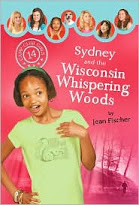This is a repost from Christmas 2009. Enjoy!

When I was growing up, and well into my adulthood, my mom always served ham salad sandwiches on Christmas Eve. It was a tradition and not one that I particularly liked. Whoever heard of a ham salad Christmas?
After my grandparents had all passed away and mom continued to serve the sandwiches, I finally asked her why. I never expected the special story that she shared with me on that Christmas Eve night.
Mom’s family had little money. They lived in an upper flat just a block away from the railroad tracks. Freight trains traveled that line connecting Chicago and Milwaukee, and the boxcars often carried stowaways. Bums, they were called back then. Hobos.
 Around suppertime on one cold Christmas Eve, the doorbell rang at my mother’s house. My grandfather answered it and found a “hobo” standing on the front porch. The man was dirty and cold, and he asked if he could have some food. My grandmother had just made ham salad for their Christmas Eve supper. It was the best my mother’s family could afford, and Grandma made it special. She ground the ham with a hand-cranked meat grinder, added homemade mayonnaise, a little pickle relish and a good dash of pepper. She was just about to spread it on slices of homemade buttered bread when the doorbell rang. Not wanting anyone to go hungry on Christmas Eve, Grandma packed a brown paper sack with several ham salad sandwiches and gave it to Grandpa. Mother remembered that the man smiled broadly when Grandpa handed him the sack, and Grandpa tucked several one-dollar bills into the man’s pocket, too – money that my grandparents really couldn’t spare.
Around suppertime on one cold Christmas Eve, the doorbell rang at my mother’s house. My grandfather answered it and found a “hobo” standing on the front porch. The man was dirty and cold, and he asked if he could have some food. My grandmother had just made ham salad for their Christmas Eve supper. It was the best my mother’s family could afford, and Grandma made it special. She ground the ham with a hand-cranked meat grinder, added homemade mayonnaise, a little pickle relish and a good dash of pepper. She was just about to spread it on slices of homemade buttered bread when the doorbell rang. Not wanting anyone to go hungry on Christmas Eve, Grandma packed a brown paper sack with several ham salad sandwiches and gave it to Grandpa. Mother remembered that the man smiled broadly when Grandpa handed him the sack, and Grandpa tucked several one-dollar bills into the man’s pocket, too – money that my grandparents really couldn’t spare.
My mother never forgot that Christmas Eve. After she married and took charge of our family’s Christmas celebration, she served ham salad sandwiches as a simple reminder that we had food while others were hungry.
If you are reading this, you most likely have a computer, a warm house, and are anticipating a Christmas Eve supper filled with good things to eat. As you celebrate, don’t forget the ham salad sandwiches. Many people are poor or homeless this year. Will you spare some “ham salad” for them?
I wish all of my readers a peaceful Christmas filled with joy. I’ll see you back here the first week in January.
 I'm not the sort of writer who creates a list of writing goals at the beginning of a new year. Instead, I'll move forward into 2012 eager to see what each day brings. As 2011 ends, these three quotations from famous authors sum up how I feel.
I'm not the sort of writer who creates a list of writing goals at the beginning of a new year. Instead, I'll move forward into 2012 eager to see what each day brings. As 2011 ends, these three quotations from famous authors sum up how I feel.

































